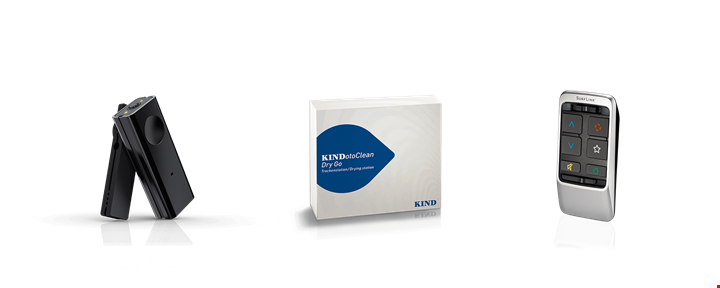How hearing aids make listening easier
Directional microphones help with speech recognition
Hearing Aid Guide
On New Year when the whole family comes together, there are many conversations and lots of activity all around. For hearing aid wearers, it's all about being able to concentrate on hearing the important conversation despite all the noise. Modern hearing aids regulate this automatically.

How directionality of hearing aid microphones works
Hearing aids used to work with a microphone that recorded sounds omnidirectionally and amplified certain frequencies. Omnidirectional means that the microphone picks up the acoustic signals from all directions in the same way.
For the wearer of a hearing aid, however, it is important that not only the right frequencies are amplified, but also the signals that are important. This usually means frontal orientation, as good speech recognition has priority and the person you are talking to is usually sitting opposite you. Directional microphones are used for this.
The two microphones are positioned about 1.5 centimetres apart in the hearing aid housing. They thus register the vibrations in the air (sound pressure) with a time delay. This delay enables the hearing aid chip to analyse the signals in such a way that the hearing aid suppresses noise coming from certain directions. So if you want to amplify the voice of a conversation partner sitting in front of you, potential interfering noises from the left, right or back are reduced or almost completely filtered out.
Scope of functions of hearing aids with two microphones
Depending on different hearing aid instrument, the directional microphones function with varying degrees of comfort. Simple hearing aids with two microphones allow manual switching from omnidirectional to directional characteristics. This allows the wearer to select the setting according to the noise environment.
Hearing aids with higher comfort levels have an automatic directional characteristic. This means that the wearer does not have to manually adjust his hearing aids to the noise environment. The hearing aids automatically align themselves to the direction of e.g. the person you are talking to and amplify their signals while other noises in the environment are reduced.
When is an external microphone useful?
The effectiveness of directional microphones is limited. On the one hand, the closer the source of noise is to the desired signal, the less effective a directional microphone is. On the other hand, directional microphones have a certain range within which they can take effect. This range is around two meters. Especially in situations such as lectures or larger conversations, an additional external microphone can be useful for the hearing aid. It is positioned in such a way that it picks up the desired acoustic signals and transmits them to the hearing aids by radio frequency band.
Discover other articles
- Smart Hearing: What intelligent hearing systems do
- The sooner an ENT specialist is consulted, the better
- Comfort to go: KINDvitalo
- Hearing loss and its causes
- Hearing aids while driving
- Optimized design for hearing solutions
- Meniere's disease
- Hearing test: Procedure and result
- Loud alone is not enough:
- Noise protection for the ears
